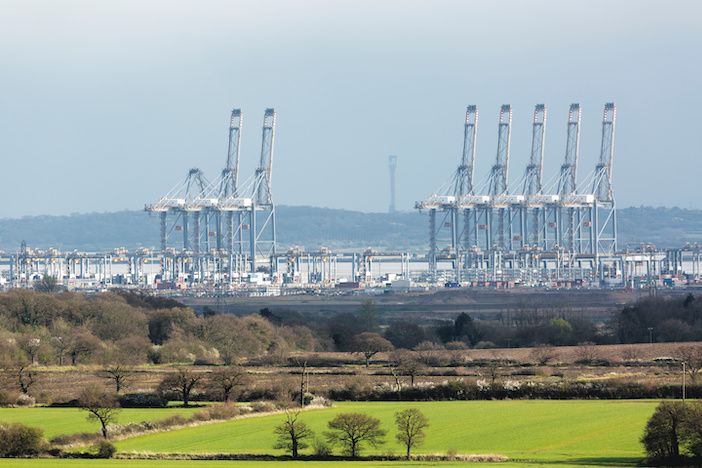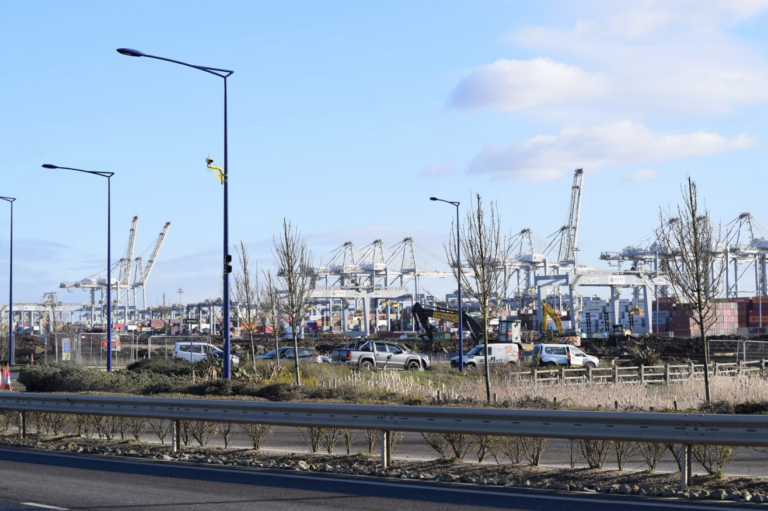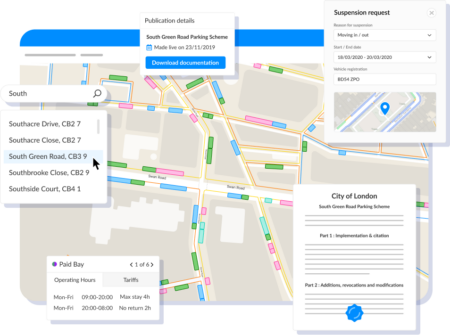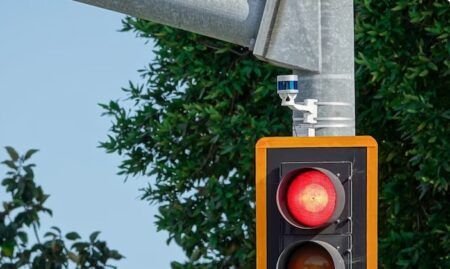Jenoptik has installed an average speed camera enforcement scheme to make roads safer at the huge DP World logistics park at the London Gateway port in south Essex.
It is the first time an average speed scheme has been installed on private roads. Offences will be enforced by Essex Police as they would on any other road. Under the Road Traffic Act 1984, the private network is still subject to all traffic laws because roads are accessible to the public.
The owners of the site turned to Jenoptik to deliver the safety solution after a number of incidents on its roads due to speeding, both by members of the public using the roads as a racetrack, and staff at businesses based there not adhering to the limits.
16 Jenoptik Specs3 Vector Cameras have been installed to cover three main routes across the site – the 40mph Port Access Road, the 30mph Ocean Boulevard and Atlantic Avenue routes within the logistics park. The cameras have been installed to the existing street lighting columns, which means costs have been minimised. The enforced limits have been applied with Traffic Regulation Orders and signing checked to ensure they are legally enforceable. Penalties will be the same as for any other police-enforced road.

“DP World contacted Jenoptik UK because we are the experts when it comes to average speed enforcement. This is our core business with more than 250 permanent average speed installations in the UK alone” said Jenoptik account manager, Timo Thornton; “Working collaboratively with DP World on the design and implementation of this scheme meant that we were able to move from order to completion in less than 12 weeks.”
Jenoptik’s Specs3 technology uses highly accurate automatic number plate recognition (ANPR) cameras to monitor the number plates of vehicles as they pass fixed points on the road, then calculates the time taken compared with how long it should take if the vehicle was driving at the speed limit. Vehicles taking less time can therefore be shown to be going too fast. Independent analysis comparing accident data before and after installation of the technology on roads proves that fatal and serious collisions is reduced by 50%.





